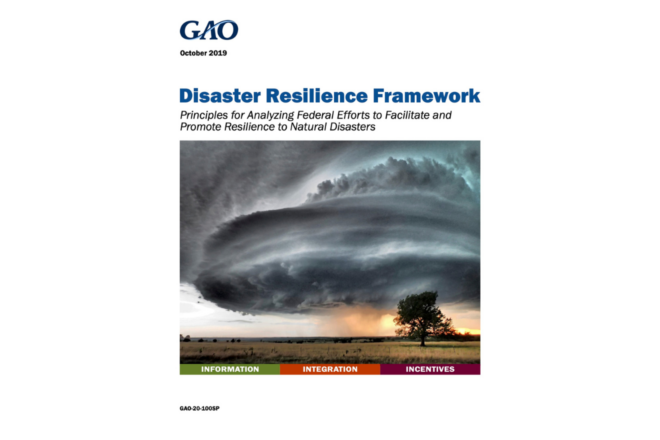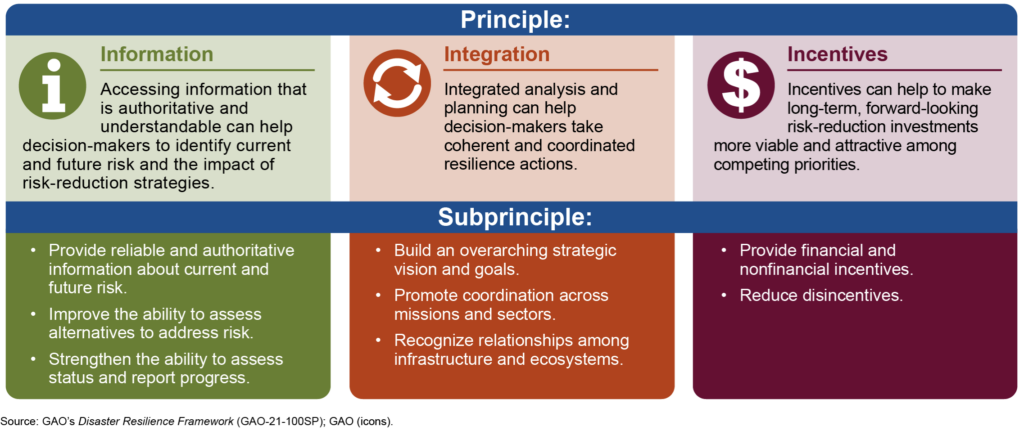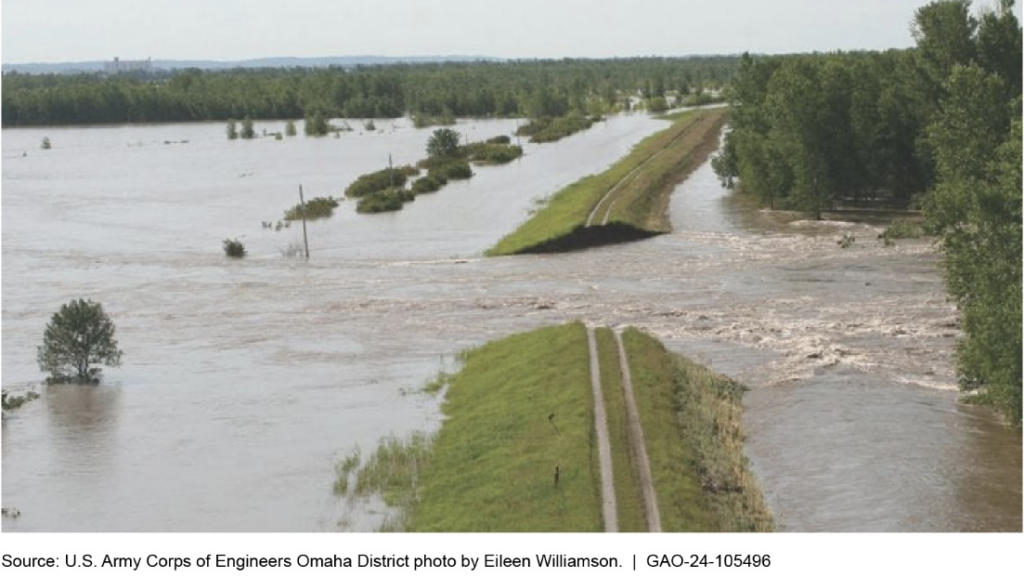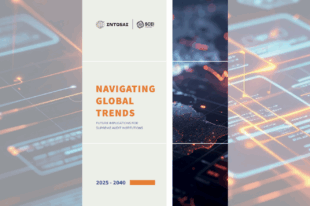Identifying Climate Resilience Opportunities with the Disaster Resilience Framework

Authors: Shannon Brooks, Carla Rojas Paz, Holly Halifax, and Zoe Need, U.S. GAO
In every region across the globe, climate change is driving extreme weather events like heatwaves, heavy rainfall, and drought to increase and intensify, according to the Intergovernmental Panel on Climate Change.(1) These extreme weather events have led to natural disasters which have cost lives, displaced people, devastated economies, and racked up billions of dollars in damages.(2)
When natural disasters linked to extreme weather events strike, governments are responsible for responding to them and play a variety of roles to help communities recover. The reliance on the government’s assistance to respond to the increasing number of natural disasters is a key source of fiscal exposure. Fiscal exposure refers to a conceptual framework for considering the wide range of responsibilities, programs, and activities that may explicitly or implicitly expose the federal government to future spending.
Governments are also responsible for understanding and managing their country’s disaster risks and enhancing climate preparedness and resilience before natural disasters strike.(3) If governments are better prepared and enhance their country’s climate resilience before natural disasters hit, they can potentially save lives, reduce disaster risks, or even better— possibly prevent disasters. If governments take action to reduce potential future losses by planning and preparing for potential climate hazards, they can also better manage and limit their fiscal exposure. Studies indicate that for every dollar invested in disaster risk reduction, governments can save 2 to 10 dollars in disaster response and recovery costs.(4)
Given their unique role and oversight of a wide range of policy areas and programs in the government, Supreme Audit Institutions (SAIs) are ideally placed to provide recommendations to their governments and legislatures on how to enhance climate resilience before extreme events and natural disasters unfold. These recommendations can span across diverse policy areas and programs.
While some SAIs may have already conducted audits on enhancing climate resilience and disaster preparedness, others may have not and wonder how to do so. The Government Accountability Office (GAO)’s Disaster Resilience Framework provides SAIs with a good starting point.
The Disaster Resilience Framework
The Disaster Resilience Framework provides auditors—or anyone responsible for assessing their nation’s climate resilience efforts—with criteria to support analysis of governmental opportunities to facilitate and promote climate resilience with a forward-looking focus.(5) This differs from traditional audit approaches that identify deficiencies in governmental programs or policies. Instead, the Disaster Resilience Framework can be used to identify the positive effects achievable from pursuing options to increase climate resilience, thereby reducing fiscal exposure. GAO developed the framework from existing literature on climate resilience, past GAO work, and feedback from external and internal subject matter experts.
The Disaster Resilience Framework is organized around three broad overlapping principles—Information, Integration, and Incentives. These key principles also include subprinciples and a series of corresponding questions that auditors can apply or adapt to their specific context (see Figure 1).
Figure 1: Disaster Resilience Framework Principles and Subprinciples

To view the entire Disaster Resilience Framework, click here or read a related article.
Applying the Disaster Resilience Framework to Dams and Levees
In a recent audit, GAO applied the Disaster Resilience Framework to identify and analyze actions the U.S. Army Corps of Engineers (Corps) could take to enhance the climate resilience of government-funded flood risk management infrastructure (e.g., dams and levees), such as in Figure 2. The Corps is a federal agency responsible for planning, designing, and constructing much of nation’s flood risk management infrastructure.
Figure 2: Breached Levee along the Missouri River, June 2011

First, GAO identified current actions the Corps is taking to enhance the climate resilience of the relevant infrastructure by reviewing government documents and interviewing key Corps’ officials and subject matter experts. For example, under the Information principle, GAO explored what reliable and authoritative information on climate risks the Corps provides. It found that the Corps has recently updated some its existing climate information for planning dam and levee projects, like the web-based Sea Level Analysis Tool and the Climate Hydrology Assessment Tool.
Next, GAO identified potential future actions (or options, as GAO refers to them) the Corps could take to further enhance the climate resilience of flood risk management infrastructure by reviewing literature and interviewing Corps officials and subject matter experts. For example, using the Information principle, GAO asked interviewees what else the Corps could do to reduce the complexity of the climate risk information when planning dam and levees projects. Interviewees said the Corps could expand regional or location-specific datasets and forecasting models to help guide decision-making and investments in dam and levee projects that incorporate climate resilience, as well as update existing web-based tools with the latest forward-looking climate information.
Finally, GAO applied the Disaster Resilience Framework’s to identify the gaps between the current actions and the potential future options. This “gap” is the potential positive effect from pursuing an option or a combination of options.” For example, under the Information principle, GAO found that opportunities existed to enhance climate resilience because not all the existing climate information to plan dam and levee projects was updated and some of it was hard to understand or use. GAO determined that in regarding to the Information principle, the Corps could update their climate information for planning purposes.
In total, GAO identified 14 options that the Corps could implement to improve climate resilience. GAO also analyzed the strengths and limitations of each option, and the Corps’ legal and regulatory authority to implement each option. GAO auditors used their professional judgment to determine the most applicable Disaster Resilience Framework principle, subprinciple, and question for consideration to use for each of the 14 options.
In previous years, GAO has also applied the Disaster Resilience Framework to identify options to enhance the climate resilience of government funded roads and agricultural producers.
The Future: Government-Wide Climate Resilience
In addition to responding to costly and devastating natural disasters, governments have the responsibility to take action to enhance climate resilience measures before natural disasters happen. Given the current state of climate change and natural disasters around the globe, SAIs worldwide have a timely opportunity to support governments in these efforts.
Auditors can apply GAO’s Disaster Resilience Framework or an adaptation of it to every government program. For GAO, this means considering expanding climate resilience audits to additional policy areas like health care, technology, and urban planning. Without being policy prescriptive, auditors can play a special role in helping build government-wide climate resilience and contributing to social and economic benefits.





